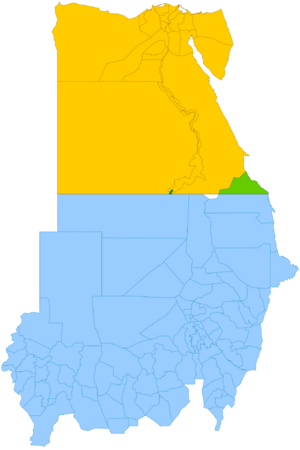Terra nullius facts for kids

Terra nullius is a Latin phrase that means "nobody's land". Since the 1800s, this idea has sometimes been used in international law to say that a country can claim land if no other country owns it. This happens when a state takes control of the land through "occupation".
Currently, there are three places sometimes called terra nullius: Bir Tawil (a piece of land between Egypt and the Sudan), four small areas near the Danube River because of a border disagreement between Croatia and Serbia, and parts of Antarctica, mainly Marie Byrd Land.
Contents
What is Terra Nullius?
In international law, terra nullius describes land that does not belong to any country. Any country can gain control over such land by occupying it. According to legal experts, the only land that can be occupied is land that no other country already owns. This includes land that is empty or land where people live but do not have a recognized state or government.
Taking over terra nullius is one way a country can gain new land under international law. Other ways include winning land in a war, having land given to them by agreement, land forming naturally (like a new island), or gaining land by continuously controlling it for a long time.
History of the Idea
Even though the term terra nullius became common in international law only in the late 1800s, its basic idea comes from an old Roman law term: res nullius. This term meant "nobody's thing." In Roman law, things like wild animals, lost slaves, or abandoned buildings could be claimed by anyone who found them. However, experts say that terra nullius is only similar to res nullius, not directly from it.
In the 1500s, writers talked about res nullius when European countries were exploring and claiming lands in the New World. In 1535, Domingo de Soto argued that Spain had no right to the Americas because the lands were not "nobody's things" when they were found. Francisco de Vitoria, in 1539, also said that the native people of the Americas, even if they were seen as "barbarians," still owned their lands. He argued that Spain did not get legal ownership just by discovering these lands.
The International Court of Justice used the term terra nullius in 1975 when discussing Western Sahara. The court said that for a country to legally "occupy" land, that land must be terra nullius – meaning it belonged to no one – at the time of the occupation. The court found that when Spain colonized Western Sahara in 1884, the people living there were organized into tribes with leaders. This meant the territory was not terra nullius because people already lived there and had a social structure.
Places Sometimes Called Terra Nullius Today

There are three places today that are sometimes said to be terra nullius: Bir Tawil between Egypt and the Sudan, four small areas along the Croatia–Serbia border, and Marie Byrd Land in Antarctica.
Bir Tawil: A Land Nobody Wants
Between Egypt and the Sudan is a landlocked area called Bir Tawil. It is about 2,060 square kilometers (795 square miles). This area became unclaimed because of different borders drawn in 1899 and 1902. One border put Bir Tawil under Sudan's control and the Halaib Triangle under Egypt's. The other border did the opposite.
Each country now claims the Halaib Triangle, which is much larger and next to the Red Sea. Because of this, neither country wants Bir Tawil. Each says the other country owns it. Bir Tawil has no permanent residents, but Bedouin people use the land for grazing.
Gornja Siga: Border Pockets

Croatia and Serbia disagree about some small areas on the east side of the Danube River. However, there are four small areas on the west side of the river, with Gornja Siga being the largest, that neither country claims. Serbia says it does not claim these lands, while Croatia says they belong to Serbia. Croatia believes these areas are not terra nullius and is talking with Serbia to settle the border.
Marie Byrd Land: Antarctica's Unclaimed Area
Many countries claimed parts of Antarctica in the early 1900s. But a large part, including most of Marie Byrd Land (the area between 150°W and 90°W), has not been claimed by any country. Countries that signed the Antarctic Treaty in 1959 agreed not to make new claims. However, the Soviet Union (now Russia) and the United States kept their right to make a claim in the future.
An area from 20°W to 45°E was also thought to be unclaimed. Norway's claim in Queen Maud Land covered the coast but not all the way to the South Pole. In 2015, Norway extended its claim to reach the South Pole.
See also
 In Spanish: Terra nullius para niños
In Spanish: Terra nullius para niños
- Aboriginal title
- Antarctic Treaty System
- Discovery doctrine
- Indigenous land rights
- International waters
- No man's land
- Res nullius
- Space law


